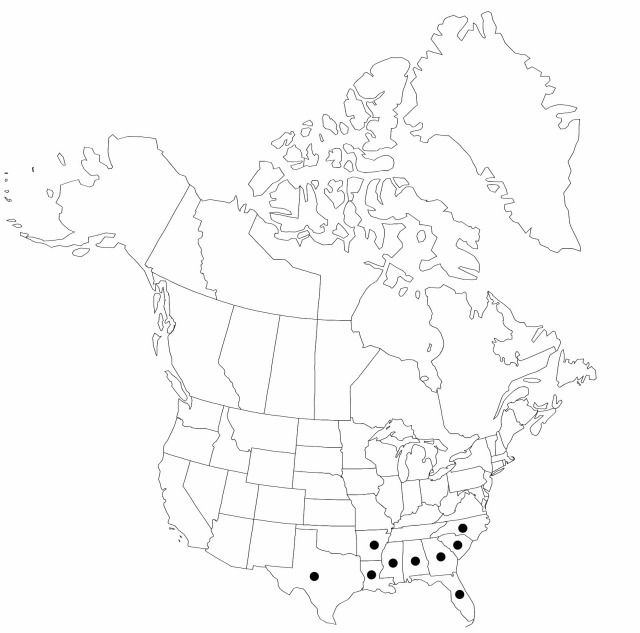Fimbristylis tomentosa
Enum. Pl. 2: 290. 1805.
Plants annual, cespitose, to 75 cm; rhizomes absent. Leaves nearly distichous, ascending, 1/2–3/4 length of culms; sheath margins ciliolate, adaxial surface sparsely to copiously hirtellous distally; ligule present, complete; blades narrowly linear, 2–4 (–5) mm wide, flat to shallowly involute, margins ciliate-scabrid, abaxial surface pilose-hirsute. Inflorescences: anthelae compound, ascending-branched, longer than broad; scapes distally oval or flattened, glabrous to pubescent; longest involucral-bract exceeding anthela. Spikelets rusty brown, lanceoloid, 4–6 mm; fertile scales broadly ovate to nearly orbiculate, 2–3 mm, broadly acute, midrib excurrent as mucro or cusp. Flowers: stamens 2; styles 2-fid, flat, fimbriate. Achenes pale to dark-brown with pale umbo, lenticular-obpyriform, 1.7–2 mm, finely pitted, appearing nearly smooth, the pits in at least 20 narrow vertical rows per face. 2n = 10.
Phenology: Fruiting summer–fall.
Habitat: Moist to wet sands, silts or peats of low fields, clearings, waste areas, stream and pond banks, very weedy in ricelands
Elevation: 0–200 m
Distribution

Introduced; Ala., Ark., Fla., Ga., La., Miss., N.C., S.C., Tex., Asia
Discussion
Fimbristylis tomentosa apparently was introduced with early rice culture and is rapidly expanding its range.
Selected References
None.
Lower Taxa
"shortened" is not a number."/2lengthofculms" is not declared as a valid unit of measurement for this property. "/4lengthofculms" is not declared as a valid unit of measurement for this property.
